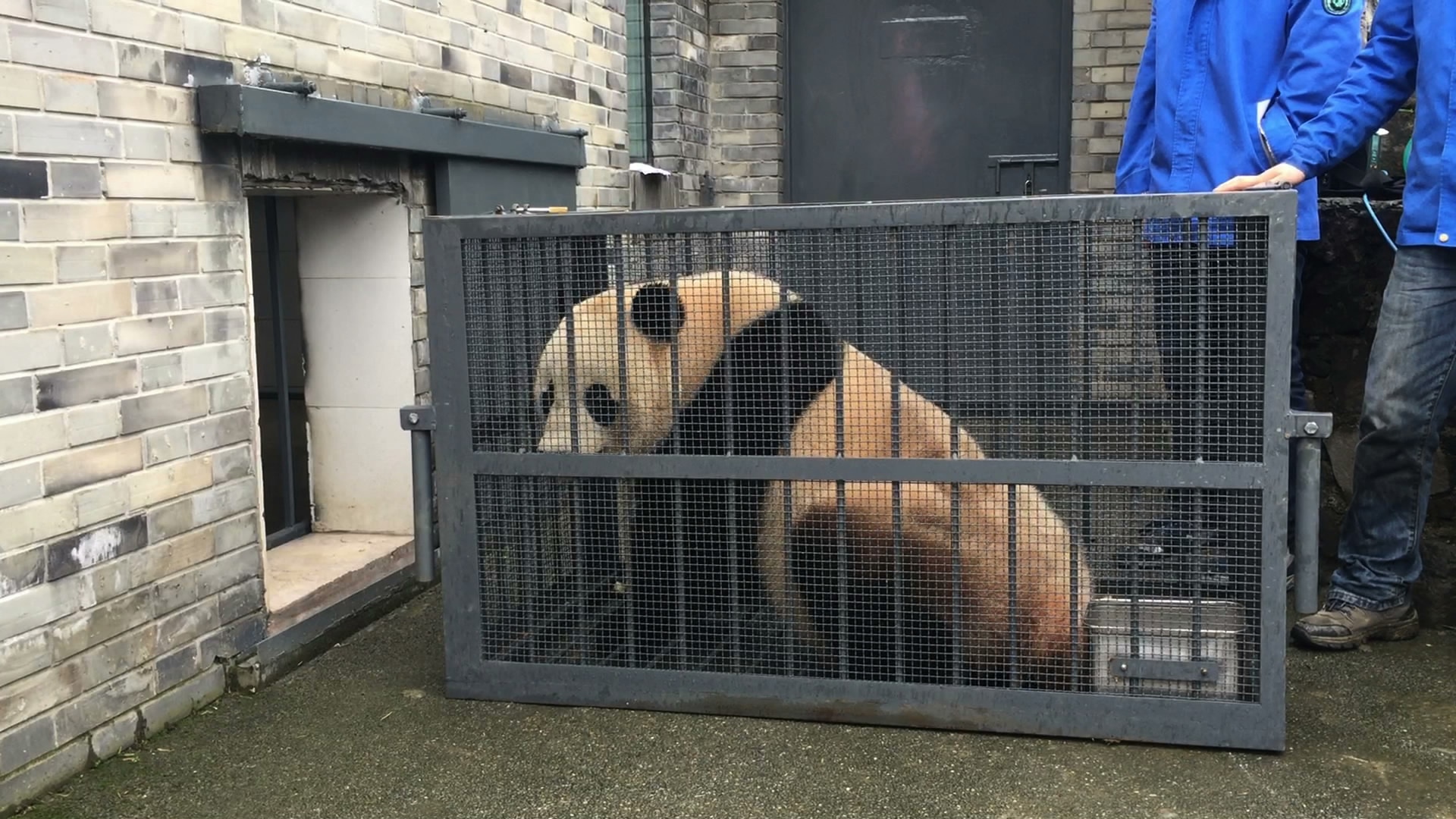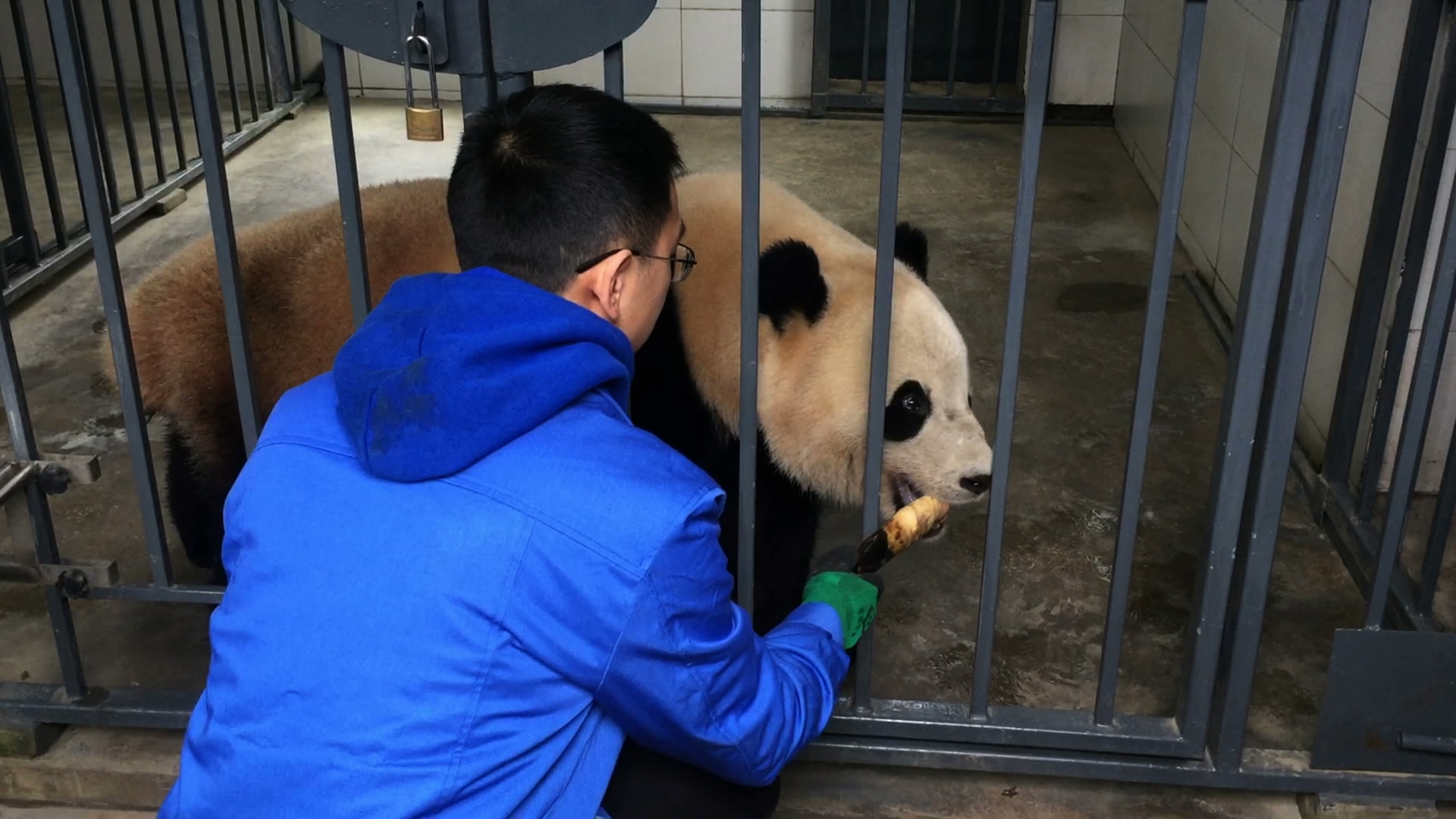By CGTN's Tao Yuan
Few housewarming parties have ever attracted quite this much attention!
On Friday, it was show time for US-born giant panda Bao Bao who spent a month in quarantine after returning to China from her home for three and a half years in Washington DC. Under the close watch of her fans and human family in a panda base just outside Chengdu, southwest China's Sichuan Province, Bao Bao moved into her new enclosure and made her public debut in China.
Surrounded by an adoring crowd and media, eager to check on how she’s adapting, Bao Bao reacted exactly how her handlers had hoped – relaxed and enjoying bamboo, occasionally roaming freely in her playground, not caring in the slightest about all the affection and attention she’s receiving.
“Pandas deal with what they have to deal with,” says Charlene Johnson, a die-hard panda enthusiast and a self-taught panda expert. “They don’t worry about the future. There are a lot of lessons to learn from pandas.”

Giant panda Bao Bao moves into her new home after a month-long quarantine. /CGTN Photo
Panda diplomacy
China has a long-standing practice of sending or loaning pandas overseas as friendly “ambassadors” until they get to the age at which they can begin breeding, around four years old.
The National Zoo in DC first started keeping giant pandas in 1972, when Mao Zedong donated a pair to the Nixon administration. Since then, China and the US have jointly studied the animals’ hormones, diet, reproductive biology and more. Even when the relationship between the two countries strained, they carried on this collaborative effort to deepen their understanding of the black-and-white animal.
Chinese Ambassador to the US Cui Tiankai once called Bao Bao the second Chinese ambassador in Washington.
“Cui Tiankai is a delightful man,” said David Rank, chief US diplomat to China, who was on site for Bao Bao’s housewarming, “but he doesn’t stand a chance against the panda bear.”
Giant panda Bao Bao explores new outdoor playground in new home in southwest China.
The international collaborative effort on panda research has paid off. In September 2016, the animal was downgraded from “endangered” to “vulnerable” by the International Union for Conservation of Nature. Their population rose 17 percent between the years 2004 to 2014.
In her homeland, Bao Bao will soon do her part. Over the next year or two as she reaches mating age, she will join a breeding program and hopefully make her contribution to the species.
Too much love?
It’s hard to imagine another species fostering quite this much affection. To some skeptics, the giant panda breeding effort is a misplacement of money and priorities.
“People talk about all the attention that pandas receive, but this is what it takes to save an endangered species,” Brandie Smith, the Smithsonian Zoo’s associate director of animal-care sciences, said in a published interview with The Atlantic magazine. “It’s not that pandas receive too much; it’s that every other species receives too little.”
To Smith, Bao Bao is an example of what it takes to save endangered species. The panda will perhaps one day become a mother, even a grandmother. And while she may never roam freely among bamboo forests, her cubs might.

The panda will enter a breeding program in China once she turns five or six years old. /CGTN Photo
Good luck, Bao Bao
As panda lovers in China welcome Bao Bao’s homecoming, her fans and family in the US are still struggling to cope with her departure.
“It was definitely an emotional goodbye,” says Johnson. “But I’m glad she’s going to do her part in keeping the species from going extinct.”
“I know you’re in a good place,” she added, looking at Bao Bao as she enjoys her new life in China. “But can’t you just miss us a little bit?”









